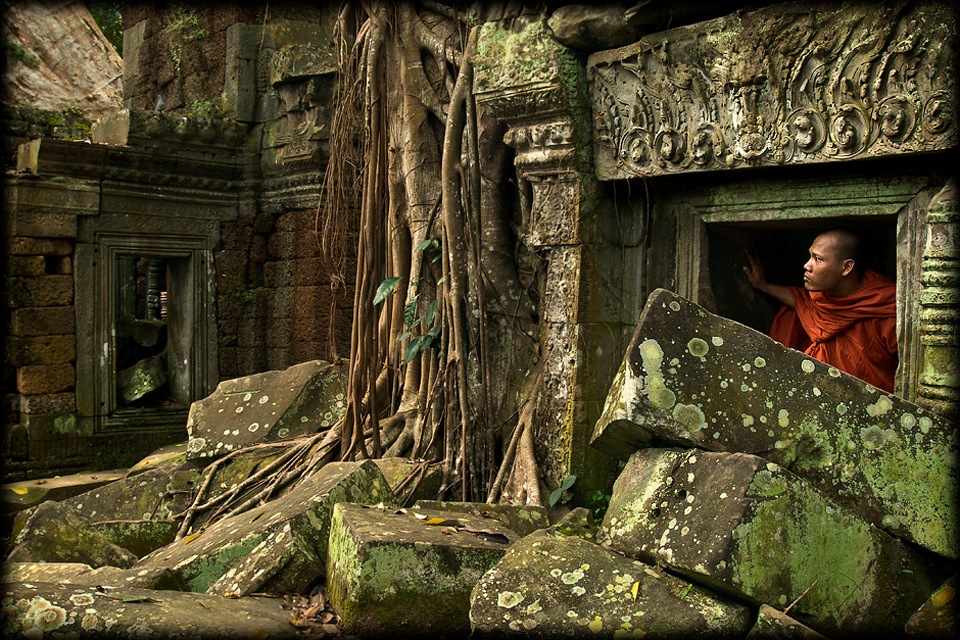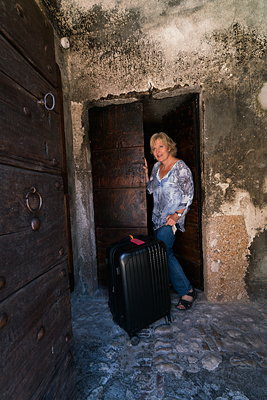
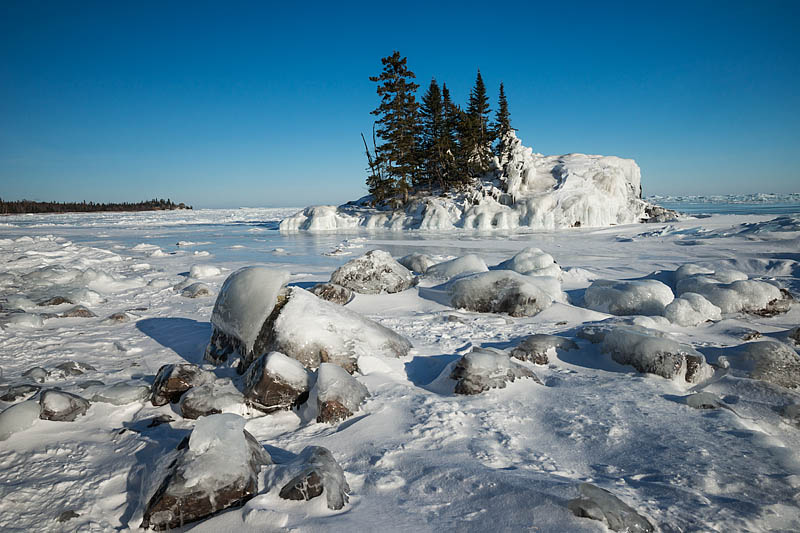
Tombolo Island
Sometimes it can be a little overwhelming when you first arrive at a new location with camera in hand. Where do you start? What should you photograph? What lens, and how should you shoot it? How to vary compositions when shooting?
Obviously everyone approaches photography differently. (That’s what makes it exciting to go shooting in a group to see what we each saw!) But I will share my thoughts of what went through my mind when composing and framing my shots of a recent trip to Tombolo Island, north of Grand Marais, Minnesota during a cold winter day.
I tend to think story. Just like an author begins with a description of a place, I too, like to start with an overview of a scene. An establishing shot to show the viewer where I am. In this location, since the main feature of Tombolo is the island itself, I was careful to frame it with plenty of area around it to show the context of where it exists. A wide angle lens (16-35mm) works great for this as it includes more scene in the frame. In fact, all of these images were taken with that lens that day.
Being an island, overview shots can be captured from all sides in different light–as each will vary depending on whether it is front lit, back lit, side lit. So I walked around the little island to see what caught my eye. The foreground changed from rocks, to jagged ice shards, to snow, and finally to thin ice (where I did not tread!) I liked how the rocks added weight to the foreground to balance the island in the above pic. And how easy it was to imagine the water between the rocks and island in the summer months.

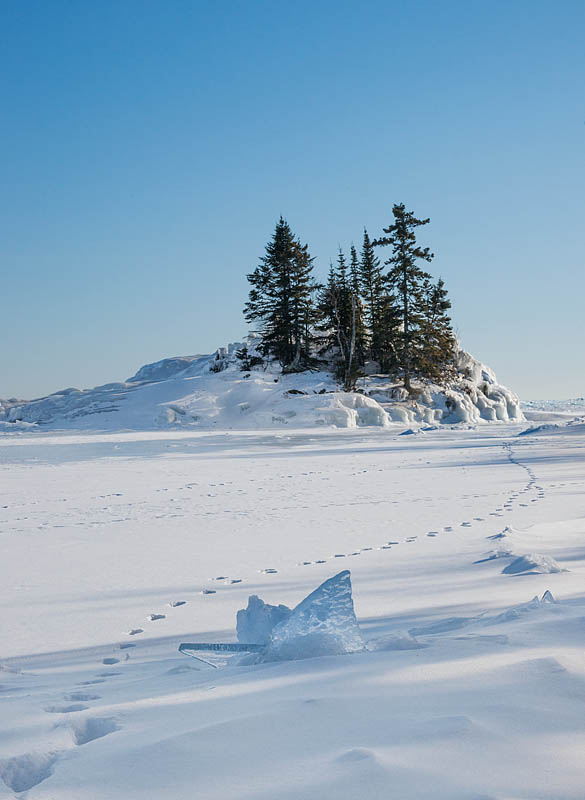
Moving around the island, I liked how the foot prints in the snow skirted around the jagged ice sticking out and lead toward the island. The leading lines of the foot prints seemed best emphasized in a vertical format. On the backside of the island, I liked the contrasting textures of the smooth and jagged ice in the foreground, and captured yet another overview shot.


Satisfied with the variety of establishing shots, I began to wander around and just let the rest of the story unfold. I simply stopped whenever something fascinated me–whether it was color, shape, texture, leading lines, diagonals, close up detail shots or people engaged in this environment. Then decided which perspective would best illustrate that feature–was it a low angle? Or tilted angle? Should I get closer to my subject? Or zoom out?

 Here, I was drawn to the similar shape of this ice-covered rock that resembled the island in the background. So I stood close enough that the foreground rock was prominent as my subject and framed the island to be included as a repeating pattern.
Here, I was drawn to the similar shape of this ice-covered rock that resembled the island in the background. So I stood close enough that the foreground rock was prominent as my subject and framed the island to be included as a repeating pattern.

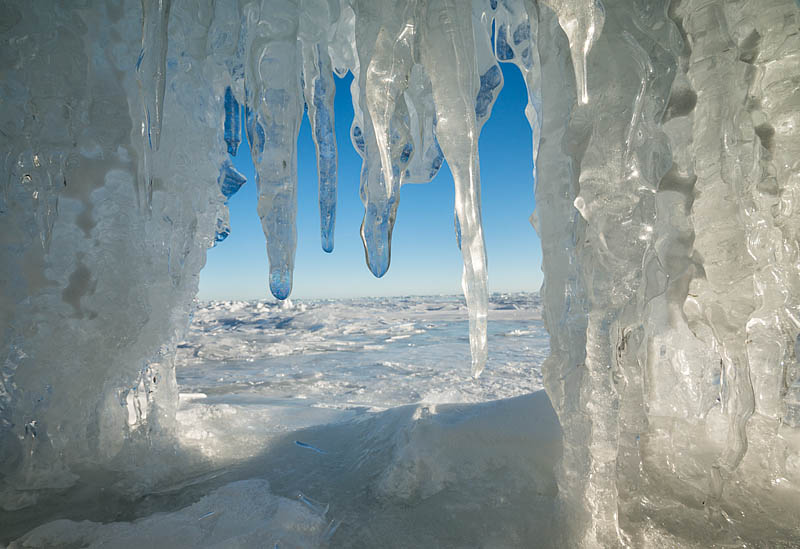
Here, I saw a little icy niche, climbed inside and shot through the ice for a view from the inside out.

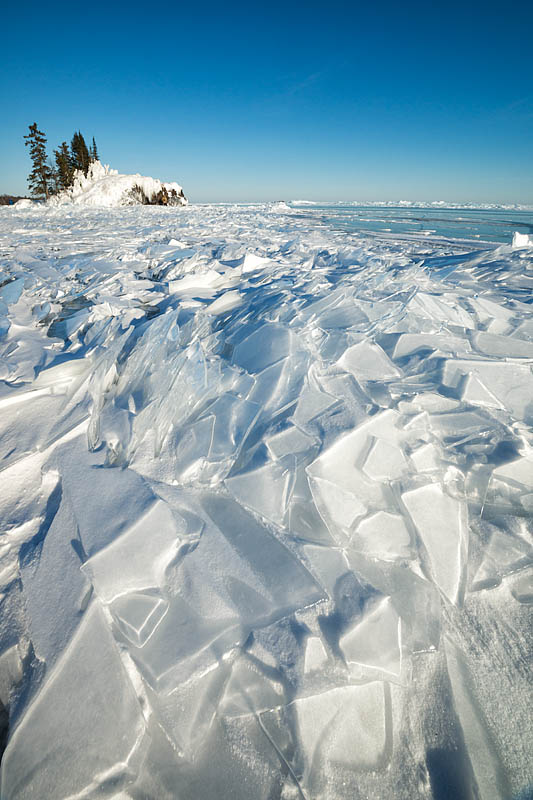 I loved all the ice shards that looked (and sounded like!) broken glass. To emphasize this unusual foreground, I tilted my wide angle 16-35mm lens down, got as close as I could and still be in focus, and framed the island horizon in the upper third.
I loved all the ice shards that looked (and sounded like!) broken glass. To emphasize this unusual foreground, I tilted my wide angle 16-35mm lens down, got as close as I could and still be in focus, and framed the island horizon in the upper third.

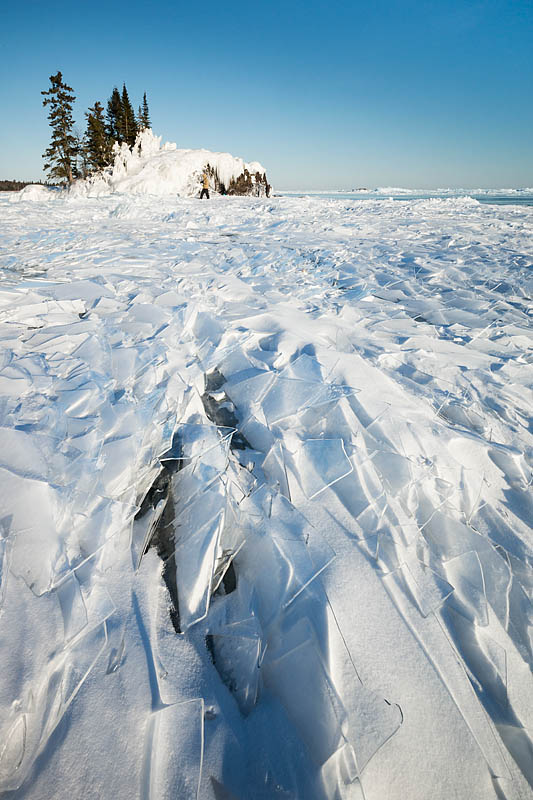
Finding the ice so fascinating, I tried a low angle capture by holding the camera close to the ground and using live view to frame it. But didn’t like the result…looked like a confusing hodgepodge. Wanted to shoot the island through the ice, but the angle was impossible.

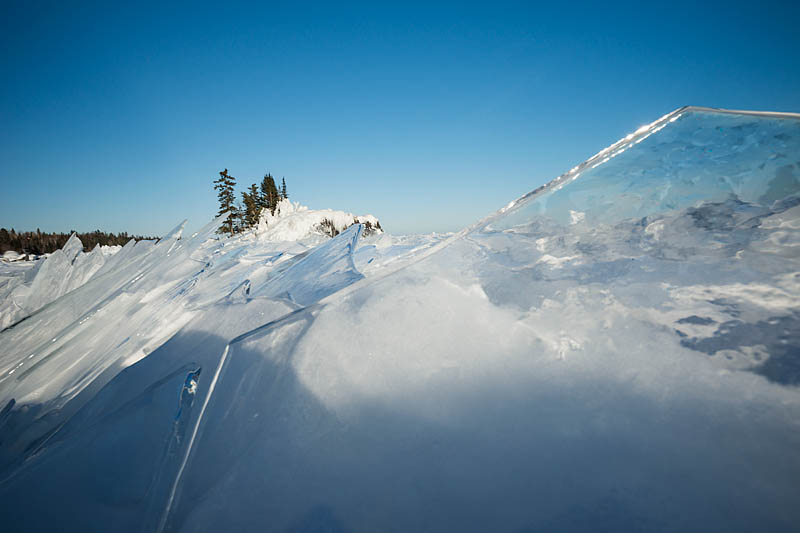
So I tried another low angle of another ice shard that I found in snow. Got really low by lying down and shooting up, framing the ice in the sky. The subject (ice shard) was immediately visible since it was isolated.

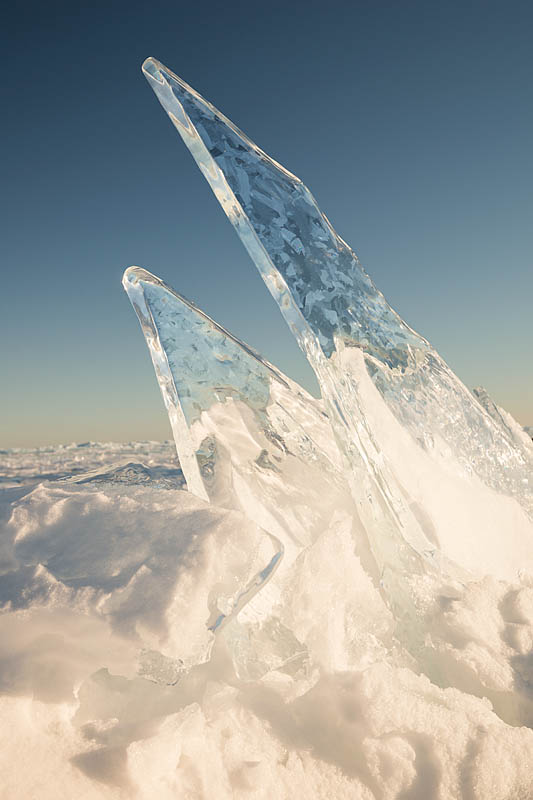 Then I varied my view a bit to include a person in the background for exaggerated scale. No, the ice shard was not 20 ft tall! But your subject will definitely appear larger than life when you use a wide angle lens and get as close as you can to it. 😉
Then I varied my view a bit to include a person in the background for exaggerated scale. No, the ice shard was not 20 ft tall! But your subject will definitely appear larger than life when you use a wide angle lens and get as close as you can to it. 😉

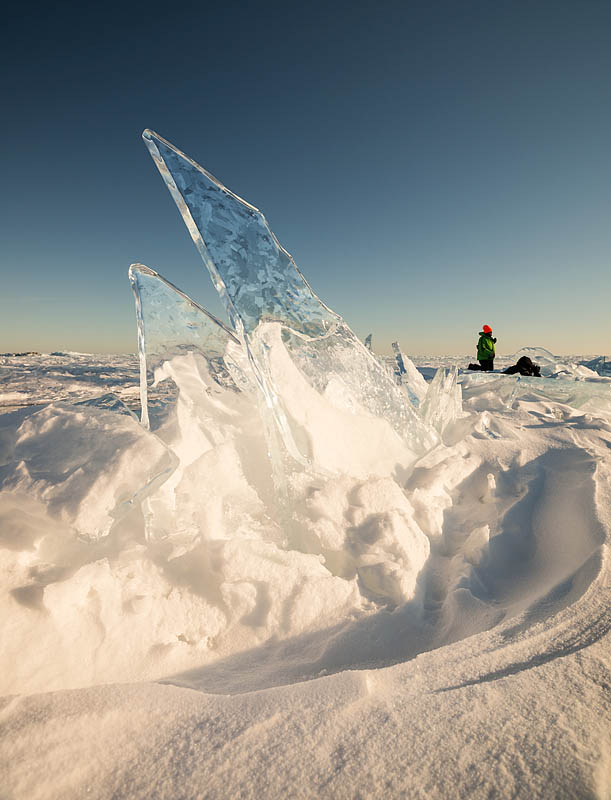
Another low angle shot–this time a “selfie” of my ice cleat clad boot on the ice–also captured by holding the camera low on the ground.

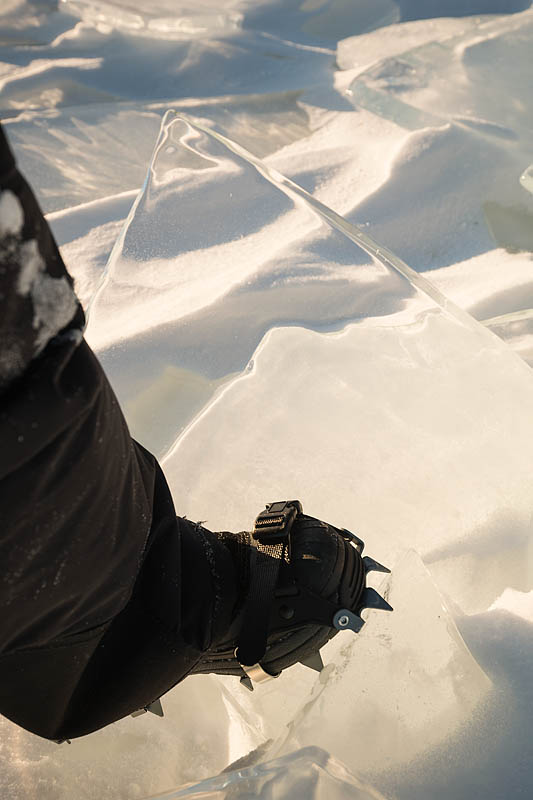
Advancing to the island there were giant icicles hanging down the rock face. Rather than a standard straight on shot of the ice, I moved to capture a profile of another photographer shooting up at the formation.


And naturally had to move in to that spot to vary the view point…

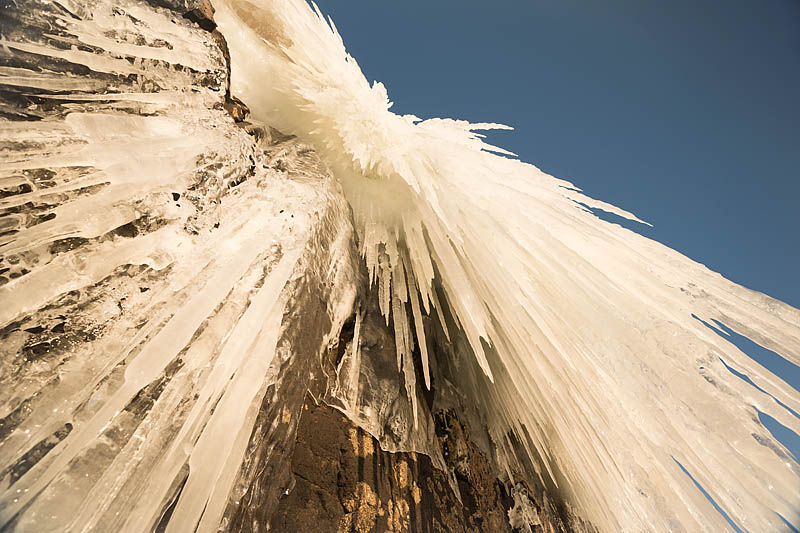 Diagonals…
Diagonals…

 And straight up…kinda scary knowing those icicles could come crashing down with a sudden thaw…yikes…
And straight up…kinda scary knowing those icicles could come crashing down with a sudden thaw…yikes…
Wandering back toward the car, I came across wolf tracks in the sand. They appeared strange. They were raised…no idea why….but that made them even more intriguing.

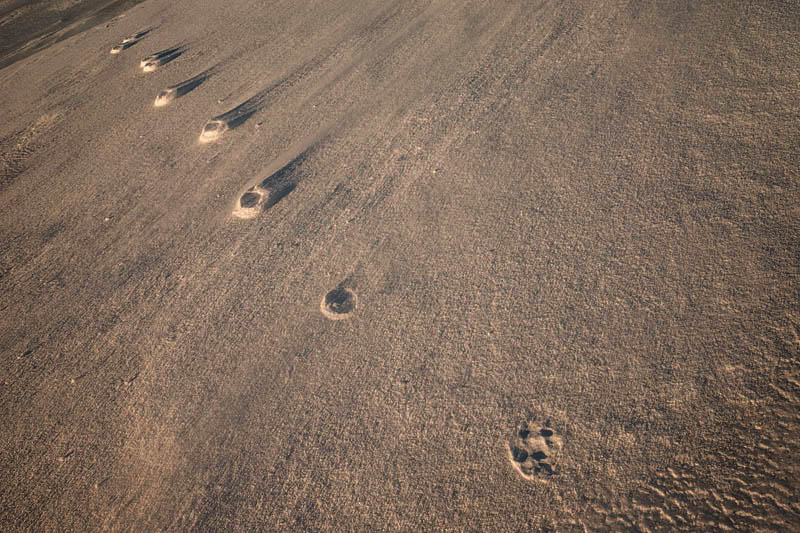
Isolating them in a photograph, however, didn’t work. But then the wind picked up, blowing snow straight toward us. Backlit, the blowing snow looked eerie and added an air of mystery and movement to the scene. Just what it needed! So I crouched down, and photographed into the wind, framing the wolf tracks in the foreground and showing the context of where this animal had been.

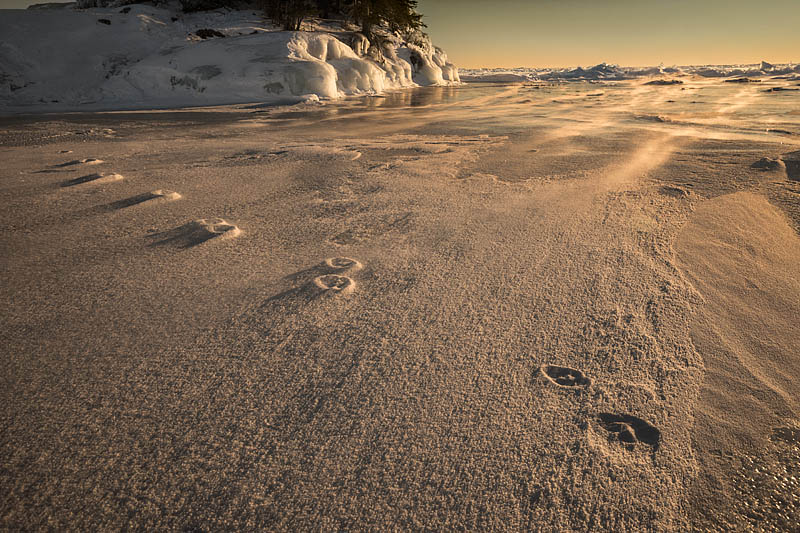
There you have it–my take on how to vary compositions when shooting winter landscapes. Your turn. Go on. Dress warm and get out there! Winter waits…


